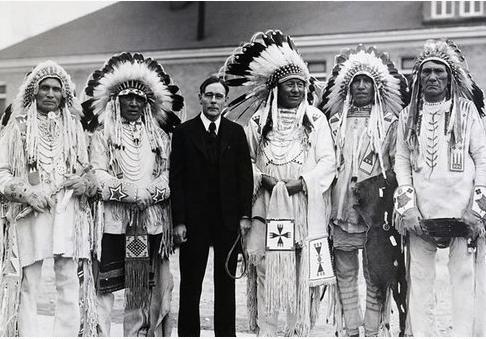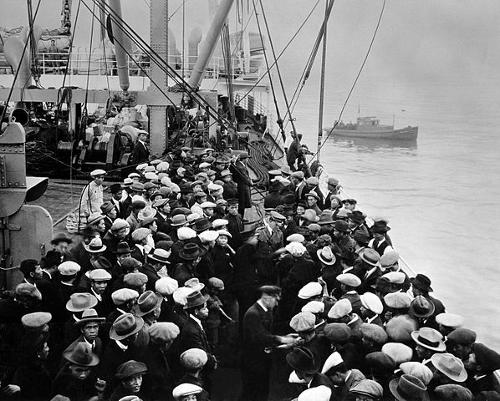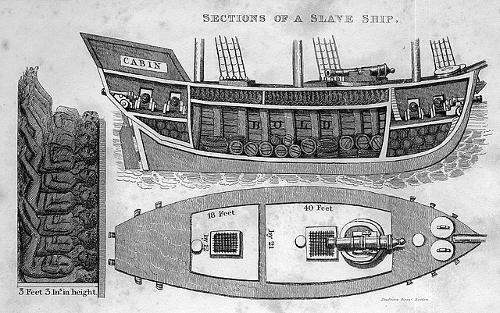USA
Population

Population
Cities in USA
| Atlantic city | Boston | Dallas |
| Detroit | Las vegas | Memphis |
| Nashville | New york | Seattle |
Popular destinations USA
| Arizona | California | Florida |
| Hawaii | Utah |
Population
General
The population of the United States includes a wide variety of groups, both by race and by country. This pluriformity has increased since the 1960s due to massive immigration from Africa, Asia and Latin America. Immigration from Europe declined sharply during the same period.
The original inhabitants make up about 1% of the total population. Most Native Americans live in the western states, often in reservations. In 1924, Native Americans were granted full U.S. citizenship, while the Indian Reorganization Act of 1934 gave tribal Indians the opportunity for a high degree of self-government. John Collier, Commissioner of Indian Affairs, meets with South Dakota Blackfoot Indian chiefs in 1934 to discuss the Wheeler-Howard Act, later known as the Indian Reorganization ActPhoto: Unknown author in the public domain
John Collier, Commissioner of Indian Affairs, meets with South Dakota Blackfoot Indian chiefs in 1934 to discuss the Wheeler-Howard Act, later known as the Indian Reorganization ActPhoto: Unknown author in the public domain
The first Europeans to settle in American territory were the Spanish in the sixteenth century. In the seventeenth century, the English, Scots, Dutch, Germans and Irish followed. The French settled in the Mississippi Valley in the 17th and 18th centuries.
From the beginning of the 19th century, the number of inhabitants began to rise spectacularly, from about 5 million in 1800 to about 75 million at the end of that century.
From 1830 to the beginning of the Civil War in 1865, another massive wave of immigration from Europe followed, with many British, Germans, Irish, Dutch and Scandinavians. They were quickly and fairly quietly incorporated into existing society. After the Civil War, a second wave of immigrants from Europe started, now mainly from South and Southeastern Europe (including Hungarians, Italians, Poland, Russians, Czechs and Ukrainians). They once had completely different backgrounds from the first wave of immigrants, and often formed closed groups in the big cities that hardly integrated into society. In economic and social terms, they therefore lagged far behind the rest of the population. Health inspection of immigrants, USAPhoto: NIAID CC 2.0 Generic no changes made
Health inspection of immigrants, USAPhoto: NIAID CC 2.0 Generic no changes made
An ink-black period in American history was the time of the slave trade, when millions of blacks from Africa were brought into the country and often employed on southern plantations. Slavery was abolished in 1863, but much of the black population of the United States still lives today in often very poor economic and social conditions. After the Second World War, many blacks moved to the major cities in the north. In 2024, blacks made up about 12.4% of the total population. Example of a slaveship that transported slaves to the USAPhoto: unknown author in the public domain
Example of a slaveship that transported slaves to the USAPhoto: unknown author in the public domain
A very large group, currently the largest ethnic minority, are the so-called "Hispanics", including Mexican Americans, Porto Ricans and Cubans. This group is also in a thorny socio-economic position, and is a kind of second-class citizen. In 2024, Hispanics made up about 19% of the total population. Since 1980, tens of thousands of Cubans have come to the United States as so-called boat refugees or "marielitos."
Approx. 6% of the population) are Americans of Asian descent, mainly Japanese, Chinese, Filipinos, Vietnamese and Koreans.
A special group are the Cajuns, descendants of the French Acadians from Canada, who, after refusing to submit to the English, took refuge in the bayous (wetlands) of the state of Louisiana.
Origin of migrants in the period 1820-1990
- Germany 13% / 7.047.000
- Italy 10% / 5,333,000
- Great Britain 9% / 5.064 million
- Austria / Hungary 8% / 4,322,000
- Canada 8% / 4.29 million
- Ireland 7% / 4,077,000
- Russia 6% / 3,433,000
- Mexico 5% / 2,802,000
- Caribbean 5% / 2.52 million
- Sweden 2% / 1,281,000
- Others 27% / 14,259,000
Distribution and some demographic figures
The population in 2024 was 342 million, making the United States the third largest country in terms of population size after China and India.
The population distribution in the United States is very uneven. Alaska and the desert areas in the west have a population density of less than 10 inhabitants per km². The east, the Great Lakes regions and parts of Texas and California, on the other hand, have a very high population density. The average population density of the United States is approximately 38 inhabitants per km². (2024) The state of Wyoming has a population density of 2 inhabitants per km², while in New Jersey it has increased to 366 inhabitants per km². Buford in Wyoming, smalles village in the USA with only 1 inhabitantPhoto: Zanygenius CC 4.0 International no changes made
Buford in Wyoming, smalles village in the USA with only 1 inhabitantPhoto: Zanygenius CC 4.0 International no changes made
About 83% of the population lives in an urban area. California and some northeastern states are the most urbanized, relatively least urbanized are the southern states. The United States has more than 200 cities with more than 100,000 inhabitants. The largest urban area is the New York-Northern New Jersey-Long Island conurbation with a population of around 19 million. (2024) With a population of 12.5 million, the western agglomerate of Los Angeles-Riverside-Orange County ranks second.
Annual population growth was 0.67% in 2024). The birth rate in 2024 was 12.2 per 1000 inhabitants; the death rate 8.5. Life expectancy at birth in 2024 was 80.9 years. (men, 78.7 years, women 83.3 years)
Population structure by age:
- 0-14 years 18.1%
- 15-64 years 63.4%
- 65+ 18.5%
Sources
Phillipson, O. / USA
Heinemann Library
Sandak, C.R. / Verenigde Staten van Amerika
Corona
Stanic, S. / De Verenigde Staten
Schuyt & Co
Supermachten
Stichting Teleac 1: Verenigde Staten van Amerika
Verenigde Staten
Uitgeversmaatschappij The Reader’s Digest NV
Webb, M. / The United States
Lucent Books
CIA - World Factbook
BBC - Country Profiles
Last updated November 2025Copyright: Team The World of Info